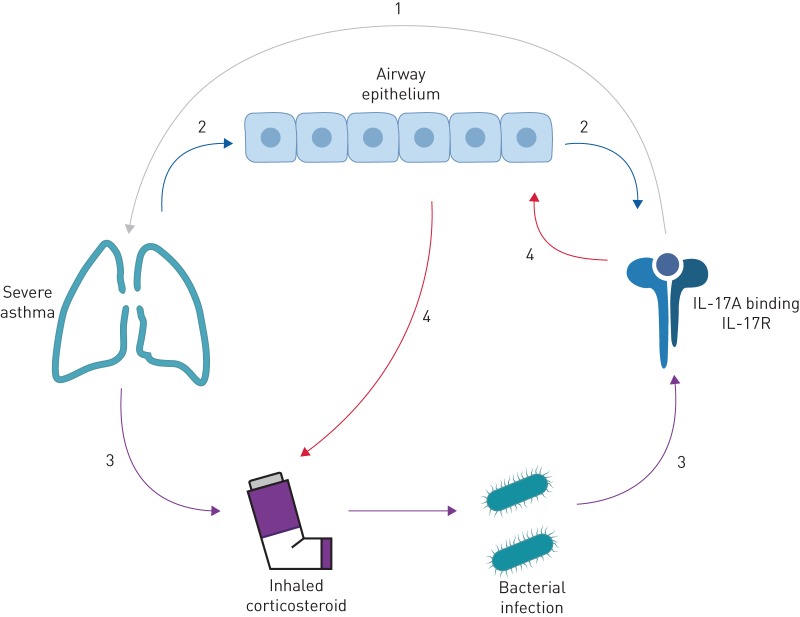FIGURE 2.
Flow diagram exploring the putative links between elevated interleukin (IL)-17A levels and severe asthma. As is commonly supposed, IL-17A may drive a particularly severe form of the disease (1), or the reciprocal may be true that severe asthma results in elevated IL-17A levels, through for instance, the disruption and damage to the epithelial cell layer that is commonly seen in asthmatic airways (2). Given that, by definition, all people with severe asthma are on high-dose inhaled corticosteroids (ICS), it is possible that through ICS-induced suppression of local inflammation there is a predisposition to infection that causes an appropriate increase in IL-17A to combat that infection (3). Alternatively, IL-17A may induce corticosteroid resistance in the epithelium, requiring higher doses of ICS for the same effect (4). IL-17R: interleukin-17 receptor.

